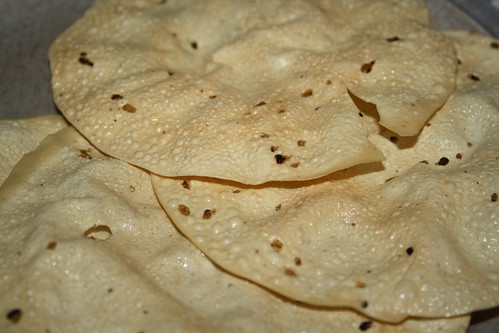date of visit: Wed 25 July 2012
It seems like pizza is a bit of an in-thing at the moment in Adelaide. Not that long ago Etica opened (I’m yet to get there) and hot on its heels is Pizza e Mozzarella on Pirie Street.
I was lucky enough to have a work lunch coming up and even more lucky that I seem to be the most food obsessed person on my team (wait, maybe even the whole floor). So when opinions were being canvassed for where we should eat I was jumping up and down suggesting Pizza e Mozzarella (on the basis that “I haven’t been there before!”).
My enthusiasm worked and a group of 14 of us trooped off for lunch. Pizza e Mozzarella is strictly a lunch venue – dinner is offered on a Friday though and it is closed on weekends. Given what I saw on a Wednesday lunch I’d also say that bookings should be considered essential.
As we were such a large group we had one of the banquet menus. We opted for the $30 a head option which was antipasto and pizza. We started with bread (very good bread, I might add – chewy and full of flavour) and prosciutto and this was followed by large platters of antipasto containing all kinds of goodies. Most of it was really delicious but there were a couple of things that let the side down. The marinated aubergine was gorgeous, the pickled green tomatoes were really lovely and the involtini, served warm, made a good counterpoint to all the vegetable treats. The pressed pork terrine type thing (yep – that’s technical Italian food talk!) was disappointing: it didn’t work cold and the pork pieces were quite large so it seemed quite sinewy and gristly. The tortilla (a bit out of place anyway?) was also a bit dull. The little tiny pickled fish (looking over the menu I suspect they were pickled whitebait but they were wee – much smaller than you’d expect whitebait to be) were really good though and something I haven’t had before.
Antipasto mostly demolished a selection of pizzas started coming out. Looking over the pizza menu it appears we had at least one of everything bar the seafood pizza. The pizzas are all very rough and ready in appearance and, like most actual Italian pizzas I’ve had, are not laden with toppings. The dough was thin on the bases but quite thick at the crust. Eating with a knife and fork was quite tricky so most of us just resorted to fingers. The only sensible way to eat pizza anyway, if you ask me! The toppings are simple, tried and true combinations which is no bad thing. I particularly enjoyed the capricciosa (artichoke, ham, anchovy and olive) and around the table there didn’t seem to be any complaints.
The banquet doesn’t include dessert but our table ordered one dessert pizza (an idea I really don’t get). I was quite grateful I was far too full to even consider trying it!
We came out spending just under $50 a head (that included beers and a few bottles of wine). One thing I didn’t like was the fact that we asked for tap water and were told that there was a $1 per person donation to charity for tap water orders. That seems to be a bit iffy to me. That little niggle aside, the service was good: efficient, friendly, helpful. A big tick is a more interesting than average wine list which includes a decent range of Italian reds and whites. I was also quite impressed overhearing some sensible wine advice being offered by the waiting staff.
Décor wise, Pizza e Mozzarella is definitely hitting the trendy/funky mark. It’s a bright, airy, multilevel venue with Riedel glassware complemented by very retro crockery (think stoneware plates and 1950s op-shop water jugs) – and, naturally, an open kitchen.
I’d go back to Pizza e Mozzarella in a flash. If you’re ordering à la carte you could easily spend under the $50 a head mark that we hit. Perhaps not the cheapest pizza you’ll eat but definitely a solid all round experience.




